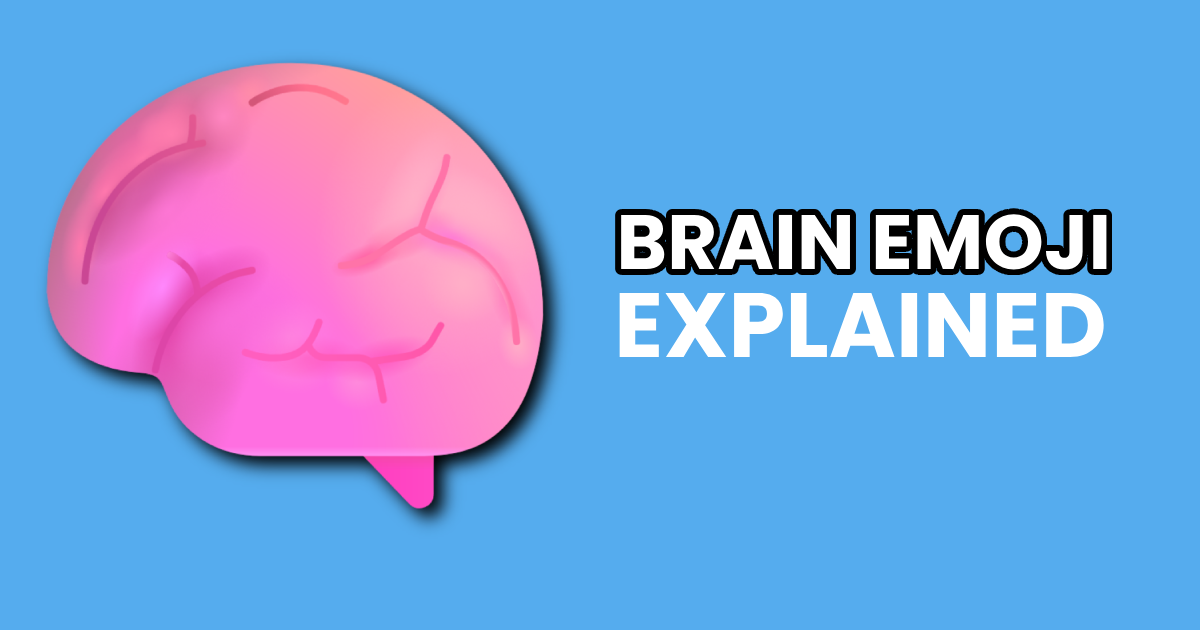A Small Pink Emoji Doing Big Work
The brain emoji in education wasn’t always taken seriously. The brain emoji wasn’t designed to mean much. It showed up in 2017, quietly placed in the middle of a growing emoji library. It didn’t grab attention. Most people used it in jokes about overthinking or being tired.
But that changed. The emoji started appearing in places that mattered. It showed up in classrooms. It made its way into support materials. Eventually, it appeared in the layouts made with EZC, a visual tool that lets people build printable resources using emojis. It wasn’t just a symbol for intelligence anymore. It became a way to talk about thinking itself.
Why the Brain Emoji Got a Second Life
For a while, the brain emoji was just another image on the keyboard. However, people began to find new uses for it. As conversations about mental health and learning needs increased, a fresh symbol was needed.
The puzzle piece had lost support in many communities. Some felt it didn’t show respect. In contrast, the brain emoji was simple and neutral. It didn’t try to explain too much. As a result, people began using it more often to show pride in how they think.
That was the turning point. It stopped being a symbol of intellect and started being a way to say, “this is how my brain works.”

A Community Made It Meaningful
On Twitter and TikTok, people with ADHD, autism, and other learning differences picked up the brain emoji. They used it in bios and captions. They added it to memes and infographics. It wasn’t part of a campaign. No company told them to do it.
Instead, they just used it. This gave the emoji a fresh meaning. It became a quiet but confident way to represent difference. Unlike older symbols, it didn’t carry baggage. That’s exactly why it worked.
Meanwhile, teachers started to notice it. As students began relating to the emoji, educators began including it in their materials too. This shows how valuable the brain emoji in education has become for neurodivergent learners. For a breakdown of its Unicode origins, see Emojipedia’s page on the brain emoji.
Why ALN Classrooms Embraced It
In ALN (Additional Learning Needs) settings, clarity is key. Students often understand visuals better than long explanations. For this reason, educators rely on images that make sense quickly and without confusion.
The brain emoji worked perfectly. It suggested “this task needs thought” or “use your ideas now.” Also, it didn’t feel childish or silly. Students didn’t push back against it. Teachers liked it because it was respectful and calm.
That’s why it showed up in visual timetables, task boards, and reward systems. It communicated without overexplaining.
EZC Users Keep Reaching for It
EZC makes printable materials using emojis. These are used by teachers, therapists, and even students. Out of all the emojis available, the brain keeps showing up in top downloads.
This happens for a few reasons. First, the emoji looks great when paired with books, light bulbs, or stars. Second, it can be resized, rotated, or layered easily. Third, it doesn’t lock you into a specific meaning. It’s flexible, which matters when designing for diverse learners.
Because of this, users return to it again and again.
A Shape That Communicates Calm
The design of the emoji also helps. It’s round and detailed without being busy. The pink tone feels soft and inviting. It avoids harsh lines or loud colours. Therefore, it works well for learners who are sensitive to visual overload.
It gets attention without being too bold. It gives structure without stress. That’s what makes it ideal for calm spaces, thinking activities, and gentle reminders.
For example, a student might see it on a worksheet that asks them to reflect. Or they might notice it on a task list and know that they need to focus.
Simple Symbols That Work Hard
Not all good communication needs words. In fact, symbols often speak more clearly than written instructions. For many learners, especially those who are neurodivergent, this is true every day.
The brain emoji shows up on tools that support routines, transitions, and challenges. It makes tasks easier to follow. It gives students something familiar and clear. Also, it helps educators provide support without being too direct.
Therefore, it’s more than a picture. It becomes part of a shared language. As the brain emoji in education continues to gain meaning, its impact on visual learning grows.
Conclusion: A Visual Cue That Earned Respect
The brain emoji started as just another graphic. But thanks to how people used it, it became something more. It’s now a quiet symbol of thinking, difference, and dignity.
In EZC, it’s not just popular. It’s trusted. It shows up in the places where clarity and kindness matter most.
And that’s a big result for a small pink shape.

